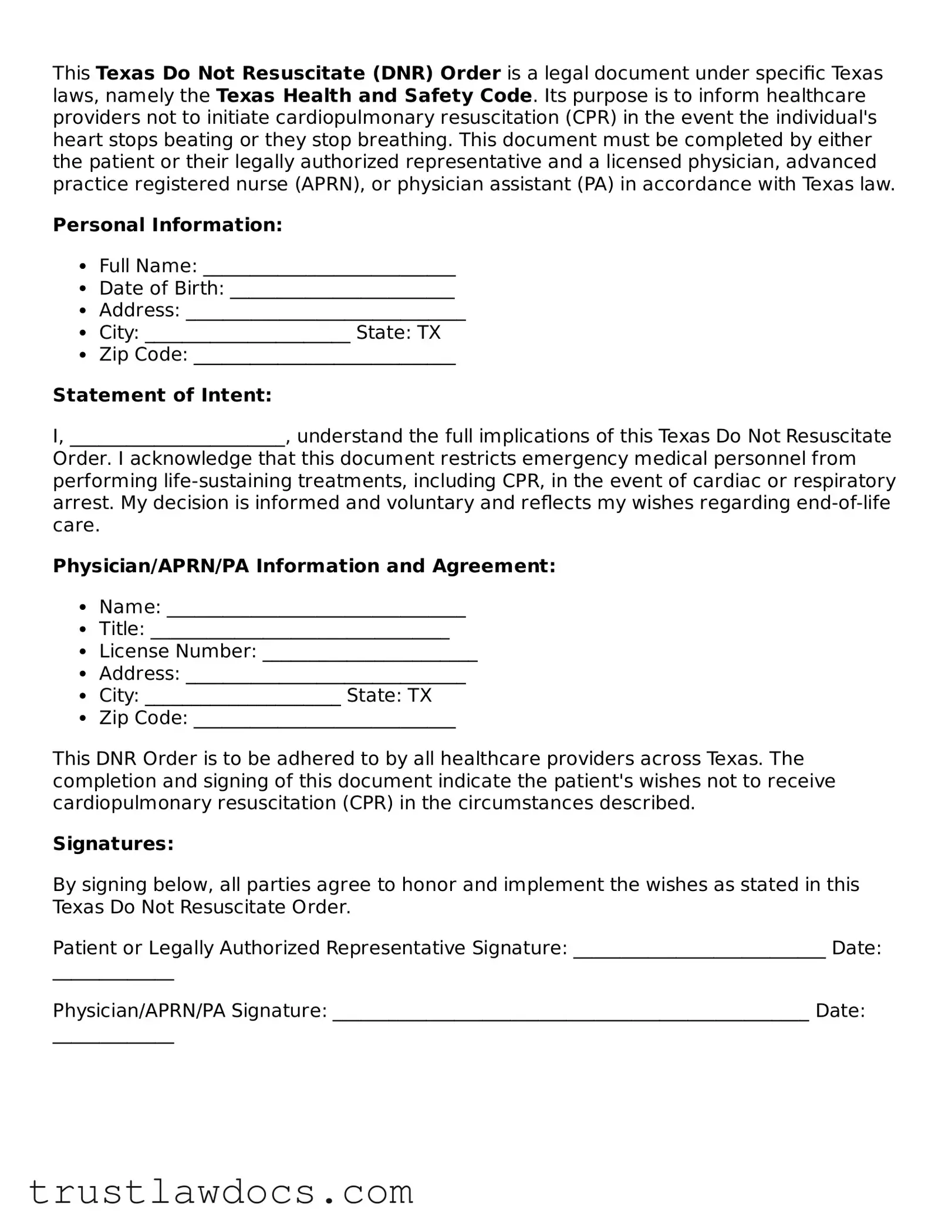The Living Will is quite similar to the Texas Do Not Resuscitate (DNR) Order as both documents guide healthcare providers about a patient's preferences in life-sustaining treatments. Living Wills typically cover a broader range of medical interventions and end-of-life care decisions, whereas DNR Orders specifically address the use of CPR (cardiopulmonary resuscitation) in the event of a cardiac or respiratory arrest.
Medical Power of Attorney forms also share similarities with DNR Orders, as both involve directives for healthcare. While a DNR Order explicitly refuses certain life-saving treatments, a Medical Power of Attorney designates an individual to make healthcare decisions on behalf of someone who is unable to do so, potentially covering a wide range of medical decisions beyond resuscitation instructions.
The Advance Directive is another document related to a DNR Order, combining elements of both a Living Will and a Medical Power of Attorney. It outlines a person's healthcare preferences, including intervention wishes and nomination of a decision-maker, if the individual can't communicate those decisions due to a medical condition, thereby encompassing the intent behind a DNR.
A POLST (Physician Orders for Life-Sustaining Treatment) form is closely related to a DNR Order as it offers medical orders about certain life-sustaining treatments based on a patient's current health condition. Unlike a DNR that primarily focuses on CPR, a POLST can provide broader instructions concerning intubation, mechanical ventilation, and other interventions.
HIPAA Release Forms, while primarily focused on the privacy and sharing of an individual's health information, intersect with DNR Orders in the context of healthcare decision-making. They ensure that healthcare providers can share vital health information with designated individuals, who might need access to this information to make informed decisions about DNR directives and other healthcare matters.
A Hospital Admission Form, often filled out upon entering a hospital, can include information relevant to a patient's DNR status. These forms capture a wide array of health-related information, including existing DNR Orders, to inform the hospital staff of the patient's wishes and medical directives upon admission.
An Emergency Medical Services (EMS) Protocol could be akin to a DNR Order in emergency medical situations. EMS protocols guide first responders and paramedics in treating patients in the field, where an existing DNR Order would dictate specific actions, such as not performing CPR on a patient who has elected for this in their healthcare directives.
A Healthcare Proxy form nominates a person to make healthcare decisions on someone's behalf, similar to a Medical Power of Attorney. Although it doesn't address specific treatments like a DNR Order, it's another tool for ensuring that a patient's healthcare wishes are respected, especially when they cannot speak for themselves.
A Five Wishes Document goes beyond traditional medical directives by addressing personal, emotional, and spiritual needs alongside medical wishes, like a DNR. It includes who the individual wants to make decisions for them, the kind of medical treatment they want or don't want, how comfortable they wish to be, how they want to be treated, and what they want their loved ones to know.
Last Will and Testament forms, primarily used for after-death affairs, indirectly relate to DNR Orders by reflecting an individual's wishes regarding their properties and dependents. While distinctly different in application—DNR Orders address immediate medical intervention preferences—they are similar in spirit, with both documents outlining directives to be followed upon the individual's incapacity or death.
